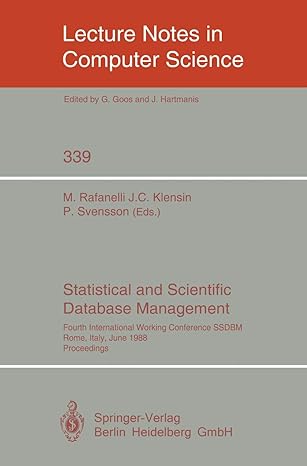Question
class App1 { public static void main(String args[]) { EasyIn easy = new EasyIn(); System.out.println(Size of the vector to generate?); int n = easy.readInt(); //
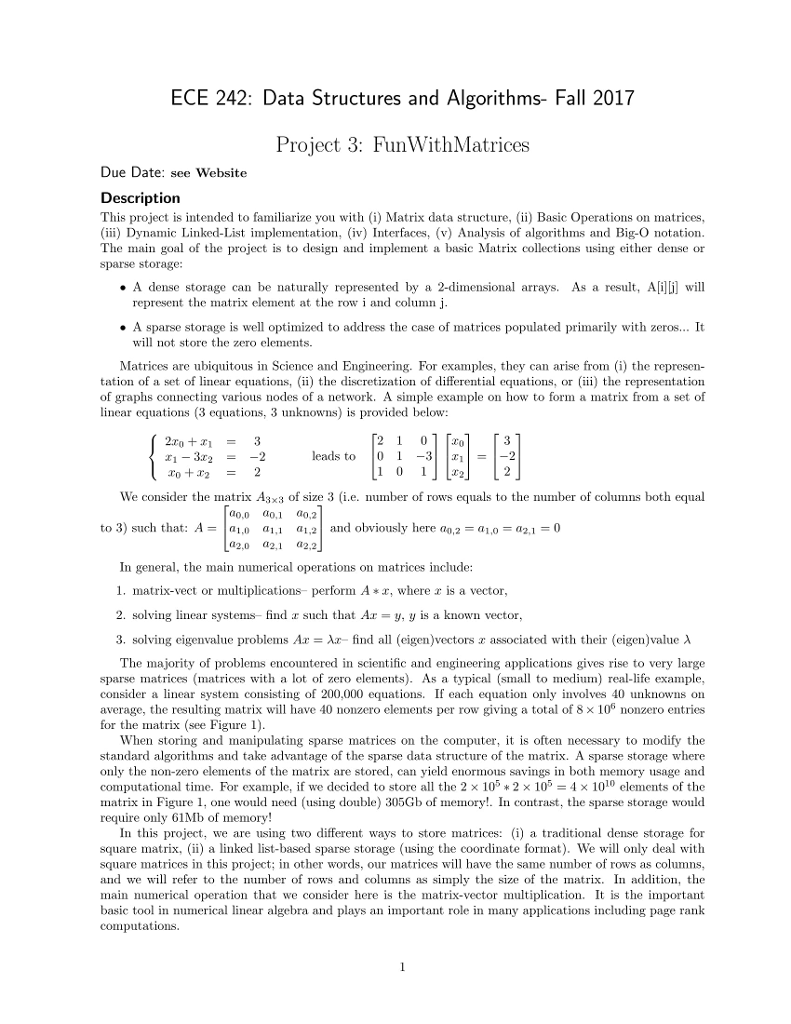
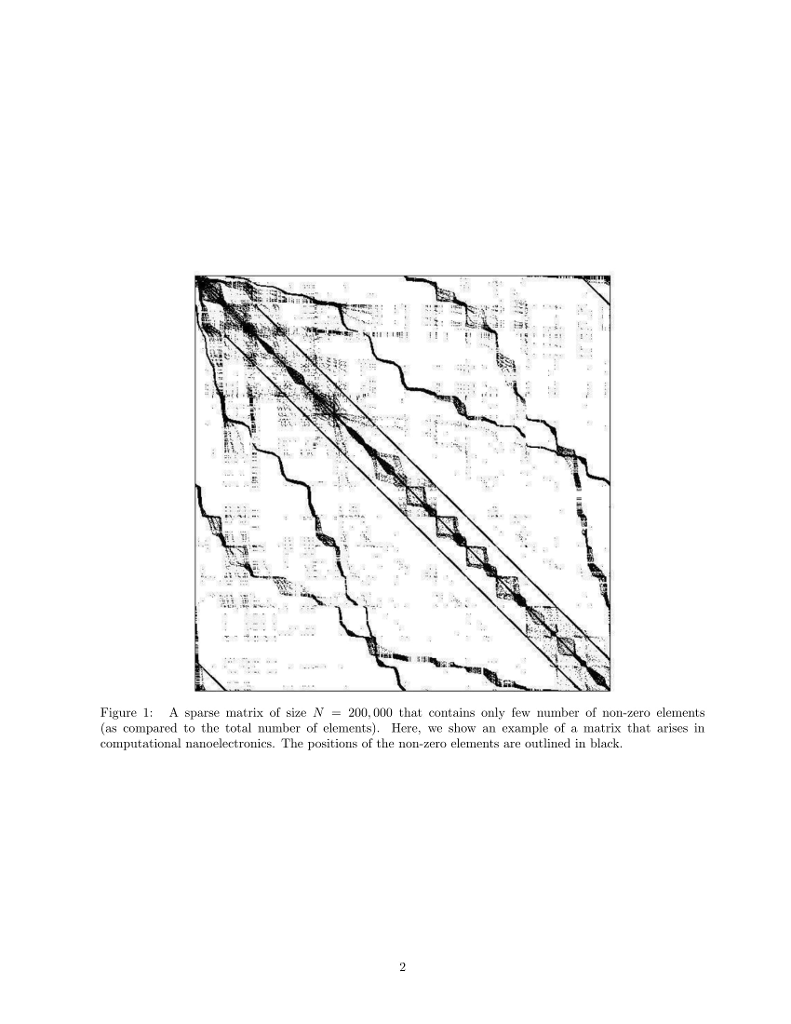
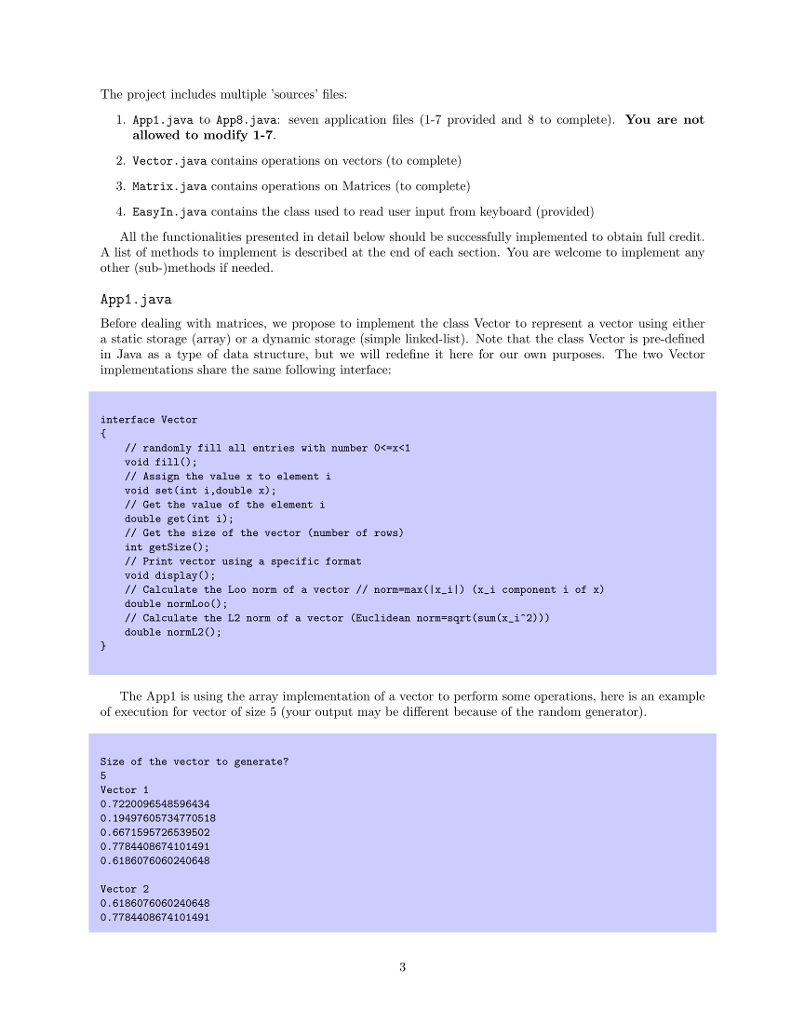

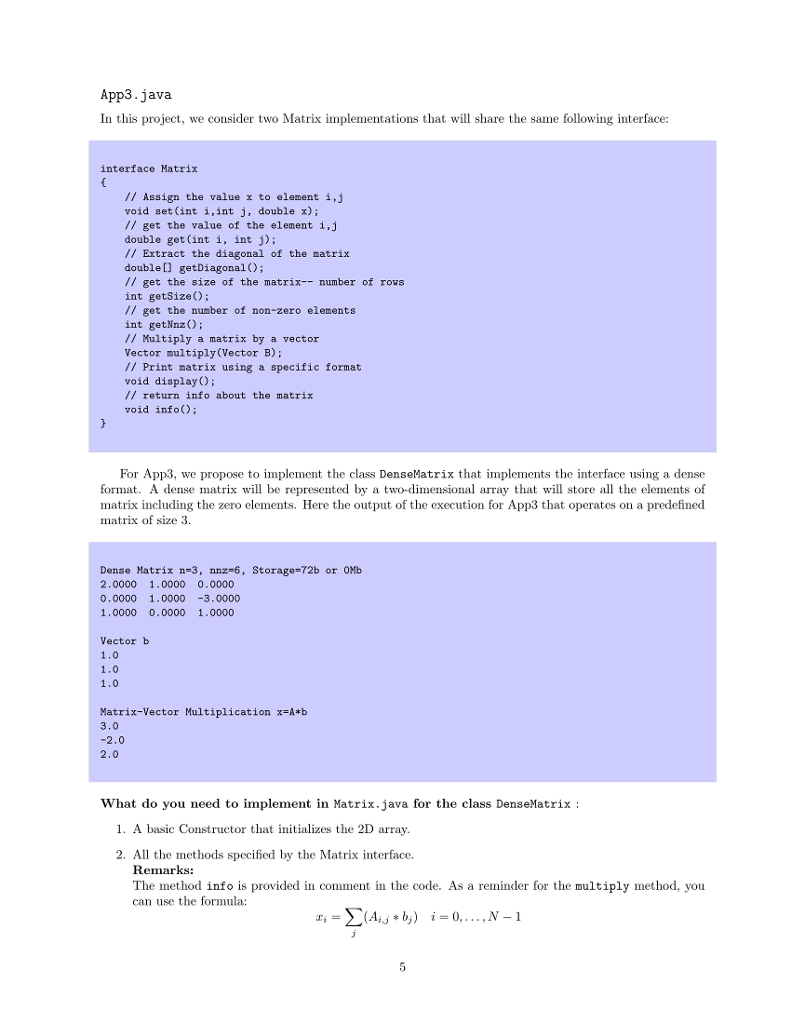


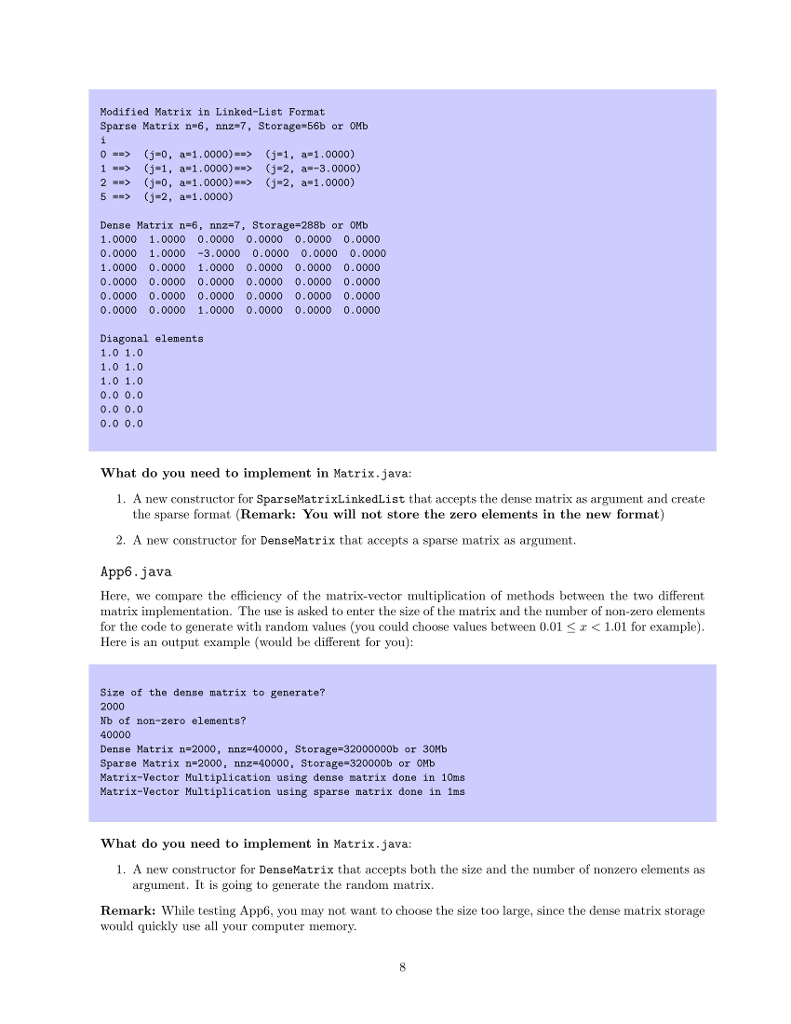
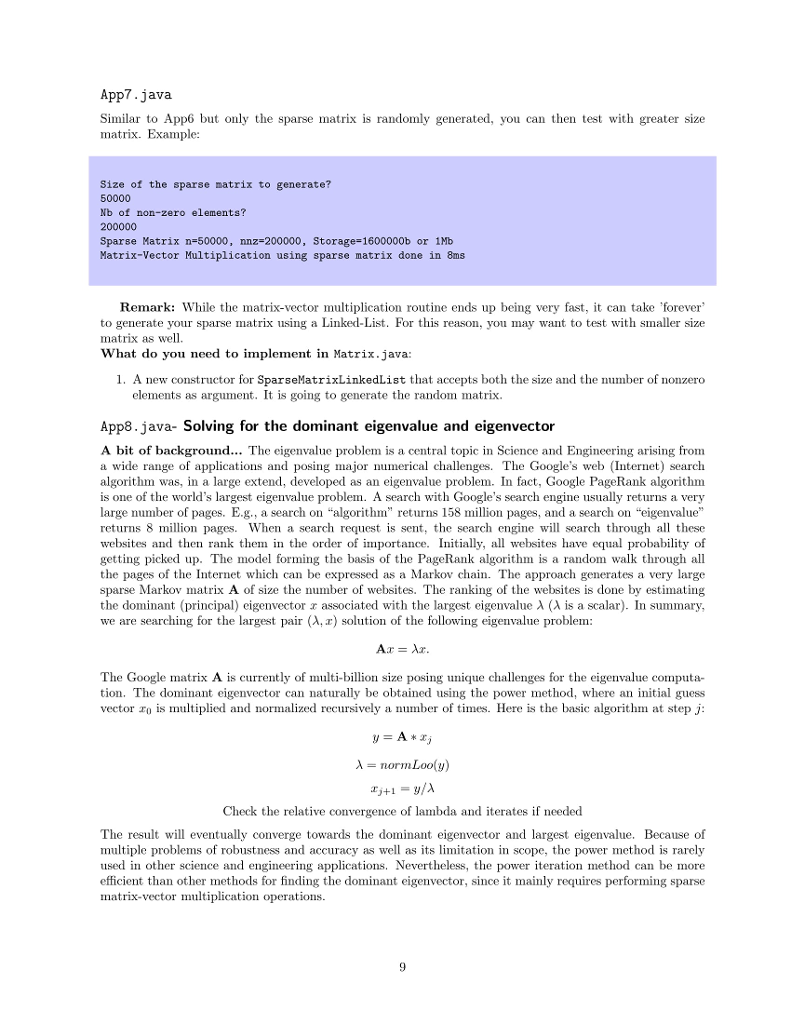
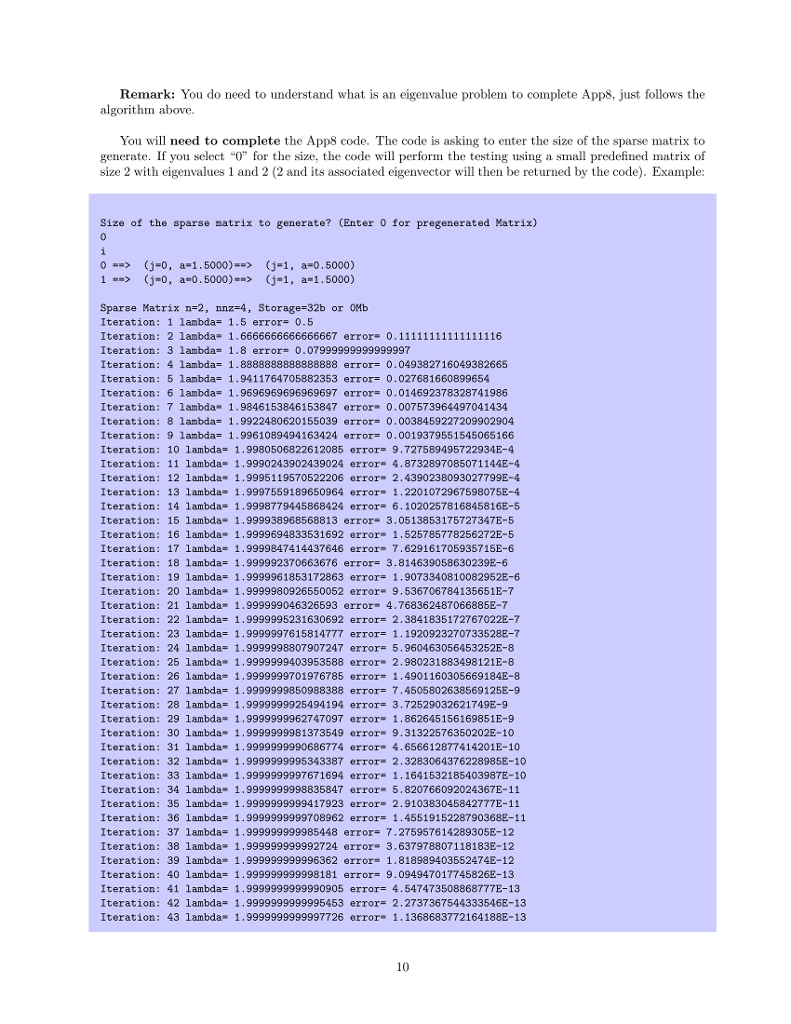
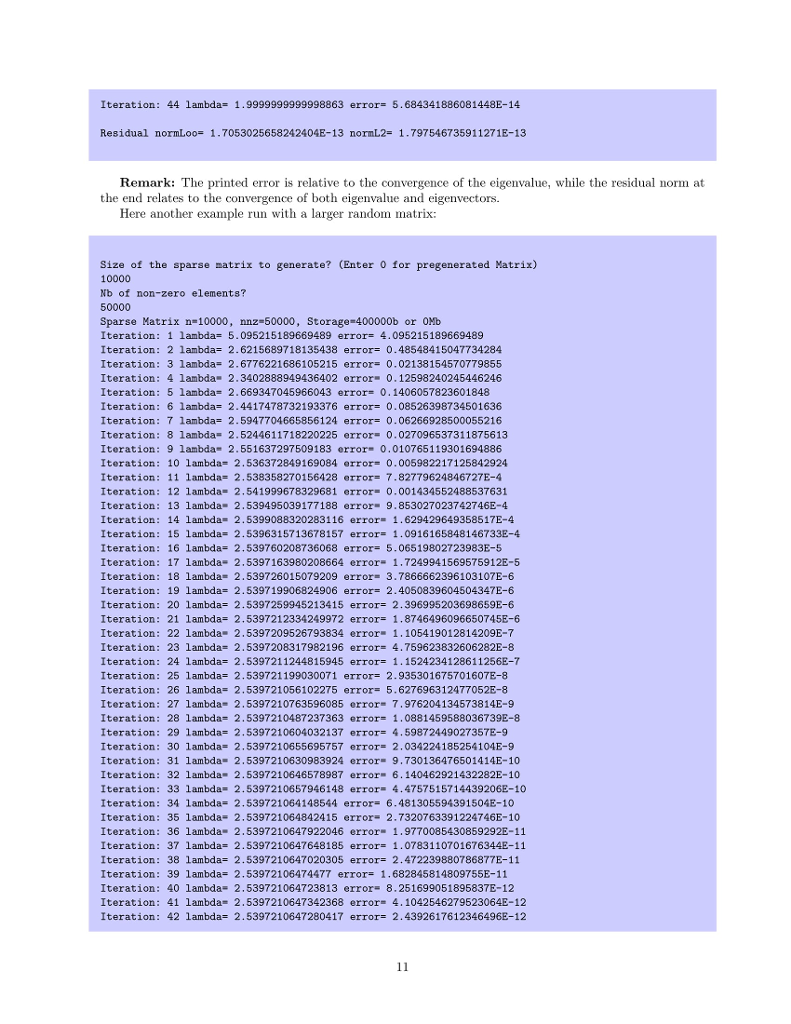
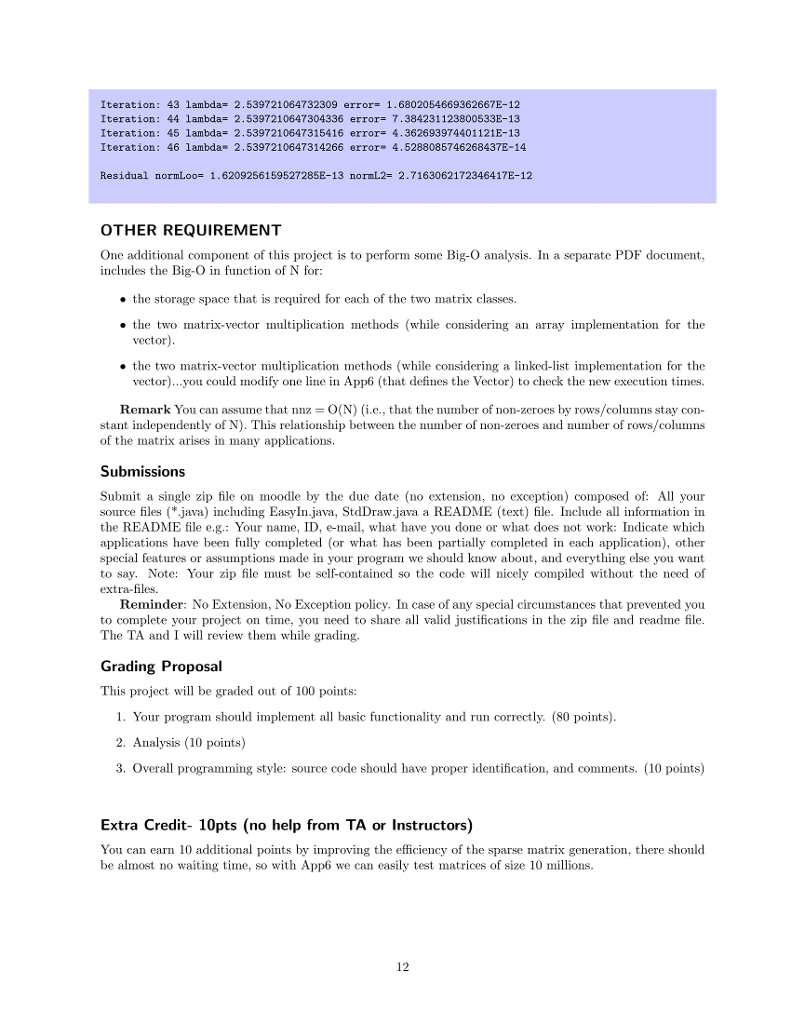
class App1
{
public static void main(String args[])
{
EasyIn easy = new EasyIn();
System.out.println("Size of the vector to generate?");
int n = easy.readInt(); // size
Vector v1,v2,v3; // vectors
// Define vectors
v1=new VectorArray(n);
v2=new VectorArray(n);
// fill up the vectors
v1.fill(); // random
for (int i=0;i // Add vectors v1+v2 v3=new VectorArray(n); for (int i=0;i v3.set(i,v1.get(i)+v2.get(i)); } System.out.println("Vector 1"); v1.display(); System.out.println("Vector 2"); v2.display(); System.out.println("Vector 1 + Vector 2"); v3.display(); System.out.println("Vector normLoo= "+v3.normLoo()+" normL2= "+v3.normL2()); } } class App2 { public static void main(String args[]) { EasyIn easy = new EasyIn(); System.out.println("Size of the vector to generate?"); int n = easy.readInt(); // size Vector v1,v2,v3; // vectors // Define vectors v1=new VectorLL(n); v2=new VectorLL(n); // fill up the vectors v1.fill(); // random for (int i=0;i // Add vectors v1+v2 v3=new VectorLL(n); for (int i=0;i v3.set(i,v1.get(i)+v2.get(i)); } System.out.println("Vector 1"); v1.display(); System.out.println("Vector 2"); v2.display(); System.out.println("Vector 1 + Vector 2"); v3.display(); System.out.println("Vector normLoo= "+v3.normLoo()+" normL2= "+v3.normL2()); } } class App3 { public static void main(String args[]) { int n=3; //size // define a Matrix Matrix A=new DenseMatrix(n); //Set Elements A.set(0,0,2.0); A.set(0,1,1.0); A.set(1,1,1.0); A.set(1,2,-3.0); A.set(2,0,1.0); A.set(2,2,1.0); A.info(); // display info A.display(); // display matrix in dense format // Define a vector Vector b=new VectorArray(A.getSize()); b.set(0,1.0); b.set(1,1.0); b.set(2,1.0); System.out.println("Vector b"); b.display(); // multiplication Vector f=A.multiply(b); // f=A*b System.out.println("Matrix-Vector Multiplication x=A*b"); f.display(); } } class App4 { public static void main(String args[]) { int n=3; //size // define a Matrix Matrix A=new SparseMatrixLinkedList(); //Set Elements A.set(0,0,2.0); A.set(0,1,1.0); A.set(1,1,1.0); A.set(1,2,-3.0); A.set(2,0,1.0); A.set(2,2,1.0); A.info(); // display info A.display(); // display matrix in sparse format // Define a vector Vector b=new VectorArray(A.getSize()); // we could use LL or array b.set(0,1.0); b.set(1,1.0); b.set(2,1.0); System.out.println("Vector b"); b.display(); // multiplication Vector f=A.multiply(b); // f=A*b System.out.println("Matrix-Vector Multiplication x=A*b"); f.display(); } } class App5 { public static void main(String args[]) { int n=3; //size int nnz=6; /nz (non-zero elements) Matrix A1=new DenseMatrix(n); //Set Elements A1.set(0,0,2.0); A1.set(0,1,1.0); A1.set(1,1,1.0); A1.set(1,2,-3.0); A1.set(2,0,1.0); A1.set(2,2,1.0); System.out.println("Original Matrix in Dense Format"); A1.info(); A1.display(); // display matrix in dense format Matrix A2=new SparseMatrixLinkedList(A1); // from dense to sparse System.out.println("Original Matrix in Linked-List Format"); A2.info(); A2.display(); // display matrix in link-list format A2.set(0,0,1.0); // change one element A2.set(5,2,1.0); // increase dynamically System.out.println("Modified Matrix in Linked-List Format"); A2.info(); A2.display(); // display matrix in link-list format Matrix A3=new DenseMatrix(A2); A3.info(); A3.display(); // display matrix in dense format System.out.println("Diagonal elements"); double[] diagS=A2.getDiagonal(); double[] diagD=A3.getDiagonal(); for (int i=0;i System.out.println(); } } class App6 { public static void main(String args[]) { int size,nnz; long startTime, endTime; EasyIn easy = new EasyIn(); // dense matrix A1 System.out.println("Size of the dense matrix to generate?"); size = easy.readInt(); System.out.println("Nb of non-zero elements?"); nnz = easy.readInt(); Matrix A1=new DenseMatrix(size,nnz); A1.info(); // sparse matrix A2 (from dense to sparse) Matrix A2=new SparseMatrixLinkedList(A1); A2.info(); // Vector b and fill randomly Vector b=new VectorArray(A1.getSize()); // array based-implementation //Vector b=new VectorLL(A1.getSize()); // linked list based implementation b.fill(); // fill randomly // multiplication A1*b startTime = System.currentTimeMillis(); // capture time Vector x=A1.multiply(b); // x=A1*b endTime = System.currentTimeMillis(); // capture time System.out.println("Matrix-Vector Multiplication using dense matrix done in "+(endTime-startTime)+"ms"); // multiplication A2*b startTime = System.currentTimeMillis(); // capture time x=A2.multiply(b); // x=A2*b endTime = System.currentTimeMillis(); // capture time System.out.println("Matrix-Vector Multiplication using sparse matrix done in "+(endTime-startTime)+"ms"); } } class App7 { public static void main(String args[]) { int size,nnz; long startTime, endTime; EasyIn easy = new EasyIn(); // sparse matrix A System.out.println("Size of the sparse matrix to generate?"); size = easy.readInt(); System.out.println("Nb of non-zero elements?"); nnz = easy.readInt(); Matrix A=new SparseMatrixLinkedList(size,nnz); A.info(); // Define a vector Vector b=new VectorArray(A.getSize()); // array based-implementation b.fill(); // fill randomly // multiplication startTime = System.currentTimeMillis(); // capture time Vector x=A.multiply(b); // x=A*b endTime = System.currentTimeMillis(); // capture time System.out.println("Matrix-Vector Multiplication using sparse matrix done in "+(endTime-startTime)+"ms"); } } class App8 { public static void main(String args[]) { int size,nnz; EasyIn easy = new EasyIn(); Matrix A; Vector x; // sparse matrix A System.out.println("Size of the sparse matrix to generate? (Enter 0 for pregenerated Matrix)"); size = easy.readInt(); if (size!=0) { System.out.println("Nb of non-zero elements?"); nnz = easy.readInt(); A=new SparseMatrixLinkedList(size,nnz); x=new VectorArray(A.getSize()); // array based-implementation x.fill(); // fill randomly (initial guess) } else { A=new SparseMatrixLinkedList(); A.set(0,0,1.5); A.set(0,1,0.5); A.set(1,0,0.5); A.set(1,1,1.5); A.display(); x=new VectorArray(A.getSize()); // array based-implementation // initial guess x.set(0,0); x.set(1,1); } A.info(); // Compute the *largest* eigenvalue/eigenvector: Ax=lambda x // Using the power method // Algo: Iterate: y // until |lambda-lambda_prev|/|lambda_prev| double lambda=1,lambda_prev; double eps=1e-13; double error=1.0; /// TO COMPLETE // Check: Compute norm Residual norm(A*x-lambda*x) Vector r=A.multiply(x); for (int i=0;i System.out.println(" Residual normLoo= "+r.normLoo()+" normL2= "+r.normL2()); } } // Simple input from the keyboard for all primitive types. ver 1.0 // Copyright (c) Peter van der Linden, May 5 1997. // corrected error message 11/21/97 // // The creator of this software hereby gives you permission to: // 1. copy the work without changing it // 2. modify the work providing you send me a copy which I can // use in any way I want, including incorporating into this work. // 3. distribute copies of the work to the public by sale, lease, // rental, or lending // 4. perform the work // 5. display the work // 6. fold the work into a funny hat and wear it on your head. // // This is not thread safe, not high performance, and doesn't tell EOF. // It's intended for low-volume easy keyboard input. // An example of use is: // EasyIn easy = new EasyIn(); // int i = easy.readInt(); // reads an int from System.in // float f = easy.readFloat(); // reads a float from System.in import java.io.*; import java.util.*; class EasyIn { static InputStreamReader is = new InputStreamReader( System.in ); static BufferedReader br = new BufferedReader( is ); StringTokenizer st; StringTokenizer getToken() throws IOException { String s = br.readLine(); return new StringTokenizer(s); } boolean readBoolean() { try { st = getToken(); return new Boolean(st.nextToken()).booleanValue(); } catch (IOException ioe) { System.err.println("IO Exception in EasyIn.readBoolean"); return false; } } byte readByte() { try { st = getToken(); return Byte.parseByte(st.nextToken()); } catch (IOException ioe) { System.err.println("IO Exception in EasyIn.readByte"); return 0; } } short readShort() { try { st = getToken(); return Short.parseShort(st.nextToken()); } catch (IOException ioe) { System.err.println("IO Exception in EasyIn.readShort"); return 0; } } int readInt() { try { st = getToken(); return Integer.parseInt(st.nextToken()); } catch (IOException ioe) { System.err.println("IO Exception in EasyIn.readInt"); return 0; } } long readLong() { try { st = getToken(); return Long.parseLong(st.nextToken()); } catch (IOException ioe) { System.err.println("IO Exception in EasyIn.readLong"); return 0L; } } float readFloat() { try { st = getToken(); return new Float(st.nextToken()).floatValue(); } catch (IOException ioe) { System.err.println("IO Exception in EasyIn.readFloat"); return 0.0F; } } double readDouble() { try { st = getToken(); return new Double(st.nextToken()).doubleValue(); } catch (IOException ioe) { System.err.println("IO Exception in EasyIn.readDouble"); return 0.0; } } char readChar() { try { String s = br.readLine(); return s.charAt(0); } catch (IOException ioe) { System.err.println("IO Exception in EasyIn.readChar"); return 0; } } String readString() { try { return br.readLine(); } catch (IOException ioe) { System.err.println("IO Exception in EasyIn.readString"); return ""; } } // This method is just here to test the class public static void main (String args[]){ EasyIn easy = new EasyIn(); System.out.print("enter char: "); System.out.println("You entered: " + easy.readChar() ); System.out.print("enter String: "); System.out.println("You entered: " + easy.readString() ); System.out.print("enter boolean: "); System.out.println("You entered: " + easy.readBoolean() ); //System.out.print("enter byte: "); //System.out.println("You entered: " + easy.readByte() ); System.out.print("enter short: "); System.out.println("You entered: " + easy.readShort() ); System.out.print("enter int: "); System.out.println("You entered: " + easy.readInt() ); System.out.print("enter long: "); System.out.println("You entered: " + easy.readLong() ); System.out.print("enter float: "); System.out.println("You entered: " + easy.readFloat() ); System.out.print("enter double: "); System.out.println("You entered: " + easy.readDouble() ); } } import java.util.*; interface Matrix { // Assign the value x to element i,j void set(int i,int j, double x); // get the value of the element i,j double get(int i, int j); // Extract the diagonal of the matrix double[] getDiagonal(); // get the size of the matrix-- number of rows int getSize(); // get the number of non-zero elements int getNnz(); // Multiply a matrix by a vector Vector multiply(Vector B); // Print matrix using a specific format void display(); // return info about the matrix void info(); } //////////////////////////////////// ARRAY DENSE MATRIX IMPLEMENTATION class DenseMatrix implements Matrix { //////// TO COMPLETE--you can uncomment the instructions below private int size=0; // size of the matrix- number of rows/columns private int nnz=0; // number of non-zero elements private double[][] data; /////// return info about the matrix public void info(){ System.out.println("Dense Matrix n="+size+", nnz="+nnz+", Storage="+(8*size*size)+"b or "+(8*size*size)/(1024*1024)+"Mb"); } } //////////////////////////////////// Linked-List SPARSE MATRIX IMPLEMENTATION class RowNode{ public int rowindex; public ColNode col; public RowNode next; RowNode(int i){rowindex=i; col=null; next=null;} } class ColNode{ public double entry; public int colindex;; public ColNode next; ColNode(int j,double x){ colindex=j; entry=x; next=null;} } class SparseMatrixLinkedList implements Matrix { private RowNode top; private int size=0; private int nnz=0; // constructors // Basic constructor- no element in the list yet SparseMatrixLinkedList(){top=null;} // methods public void display(){ RowNode current = top; //start probe at the beginning System.out.println("i"); while (current!=null) { // until the end of the list System.out.print(current.rowindex+" "); ColNode jcurrent = current.col; while (jcurrent!=null) { // until the end of the list System.out.format("==> (j=%d, a=%.4f)",jcurrent.colindex,jcurrent.entry); jcurrent = jcurrent.next; } System.out.println(); current = current.next; // move to next Link } System.out.println(); } // return info about the matrix public void info(){ System.out.println("Sparse Matrix n="+size+", nnz="+nnz+", Storage="+(8*nnz)+"b or "+(8*nnz)/(1024*1024)+"Mb"); } } import java.util.*; interface Vector { // randomly fill all entries with number 0 //////////////////////// USING ARRAY IMPLEMENTATION //class VectorArray implements Vector //{ // //} //////////////////////// USING Linked-List IMPLEMENTATION class VecNode{ public int index; public double entry; public VecNode next; VecNode(int i,double x){index=i;entry=x;next=null;} } //class VectorLL implements Vector //{ // //}
Step by Step Solution
There are 3 Steps involved in it
Step: 1

Get Instant Access to Expert-Tailored Solutions
See step-by-step solutions with expert insights and AI powered tools for academic success
Step: 2

Step: 3

Ace Your Homework with AI
Get the answers you need in no time with our AI-driven, step-by-step assistance
Get Started


